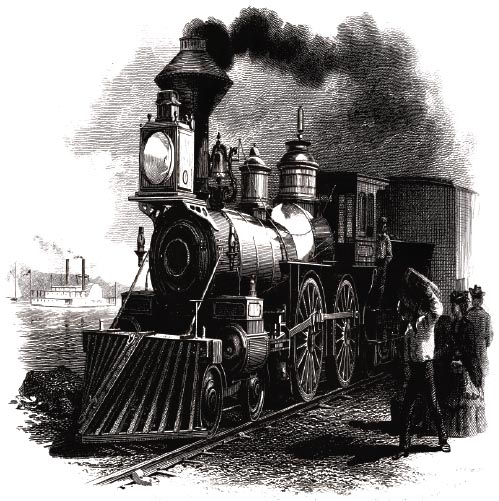Y4. Lesson 12. Present tam-ti
Prior learning: None
Duration: 30 minutes
Materials: Woodblocks or claves
Keywords: Beat, rhythm, singing, chanting, partners, rhymes, circle games.
Difficulty: ![]()
Prepare
Present
tam-ti
Practise

A dotted crotchet followed by a quaver is given the rhythm syllable tam-ti (although other syllable names are sometimes used). The traditional term for these two notes is a dotted crotchet followed by a quaver.
 Melodic development
Melodic development
![]() Students add a new song to their repertoire.
Students add a new song to their repertoire.
- Teach the song line-by-line in your usual manner.
- The song will be used as practice for the rhythm syllable tam-ti min in the following lesson.
- The pitches in the song comprise the la pentachord.
- Ask where the song comes from [America]
- What type of song is it? [Afro-American spiritual]
- This song will be introduced in later lessons to practise tam-ti, low la and low ti, and the concept of an anacrusis.

 Rhythmic development
Rhythmic development
![]() Students are presented with the rhythm syllable tam-ti.
Students are presented with the rhythm syllable tam-ti.
- Sing the first measure as the target phrase of Chairs To Mend using a neutral syllable and tap or clap the beat.
- Ask the class how many beats were tapped [4]
- Ask if the first two sounds each sit on a beat [no]
- Do the last two sounds sit on the beat [yes]
- Repeat the phrase. Is the first note longer or shorter than the second note? [longer]
- Ask where the first sound sits [on the first beat]
- What about the second sound? [after the second beat]
- Teach that two uneven sounds over two beats, where the first is long and the second is short, are called tam-ti.
- The class should sing the target phrase using the rhythm syllables tam-ti, ta, ta.
- Use measure two as the target phrase. Students should sing tam-ti, too.
- Students should repeat measures one and two using the new syllable.
 Creative movement
Creative movement
![]() Students improvise movements and words to this German folk song.
Students improvise movements and words to this German folk song.
- This German folk song demonstrates the dotted minim and the practice of fa within the do pentachord.
- The time signature is in 3/4 and taught as triple time with a count of 1 -2 -3.
- The words and movements may be improvised.
- For example, students may make a calling movement with their hand to their mouth on the words 'Cuck-oo.' and a listening movement with their hand to their ear on 'calls from the wood.'
- Students should change out 'singing, dancing and swaying' to another combination of words and movements.
German lyrics
Kuckuck, Kuckuck ruft’s aus dem Wald.
Lasset uns singen, tanzen und springen.
Frühling, Frühling wird es nun bald.
Kuckuck, Kuckuck läßt nicht sein Schrei’n:
Komm in die Felder, Wiesen und Wälder.
Frühling, Frühling, stelle dich ein.
Kuckuck, Kuckuck, trefflicher Held.
Was du gesungen, ist dir gelungen.
Winter, Winter räumet das Feld.
 Listening
Listening
![]() Students listen to instruments of the orchestra and discover the rhythm syllable tam-ti.
Students listen to instruments of the orchestra and discover the rhythm syllable tam-ti.
- Students are musical detectives. For fun, divide the class into groups.
- Play the first track and ask one group the name of the instrument [clarinet]
- Ask another group which family of the orchestra it belongs to [woodwind]
- Ask another group how many times tam-ti can be heard in this track [2]
- Repeat for all the following tracks.
- Play the track as many times as needed for correct answers.
 Visual learning
Visual learning
![]() Students visually discover how tam-ti is recognised.
Students visually discover how tam-ti is recognised.
- Project the beat sheet.
- Ask how many beats can be seen [4]
- Ask how many sounds there are [4]
- Ask about the third and fourth sounds. Are they on the third and fourth beats? [yes]
- Ask about the first two sounds. Are they on the first two beats? [no]
- Is the first sound longer than one beat? [yes]
- Does the second sound start on the second beat? [no]
- Where does the second sound start? [between the second and third beat]
- Is the first sound longer than the second sound? [yes]
- Ask what we call two sounds over two beats, with the second sound occurring after the second beat [tam-ti]
 Instruments
Instruments
![]() Students
Students
 Part work
Part work
![]() Students sing in canon.
Students sing in canon.
- This song makes a beautiful canon; an example of how it might sound is on the player.
- Divide the class into two groups.
- The first group will begin singing as you conduct them. When they finish, they must start again without a pause.
- The second group will commence singing on the second measure and, when finished, will continue from the beginning without pause.
- Let both groups continue until your command to stop.
 Assess
Assess
Suggested lessons
Y1. Beat II

Y1. Beat III

Y1. Beat IV

